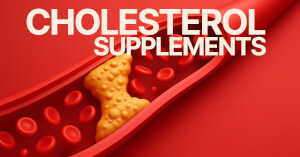
Red Yeast Rice Supplement Information and Usage Guide
Red Yeast Rice is traditionally used to support cholesterol balance and heart health.
Red Yeast Rice is a fermented product made by culturing rice with the yeast Monascus purpureus. It has been used in Chinese cuisine and medicine for centuries to support heart health.
The fermentation process produces compounds called monacolins, especially monacolin K, which is chemically identical to the active ingredient in some statin drugs. These may help lower LDL cholesterol levels.
Red Yeast Rice is often used to manage cholesterol naturally. While clinical studies show promising lipid-lowering effects, users should be cautious of potential side effects and drug interactions.
Other names & forms of Red Yeast Rice supplement : monascus purpureus, hong qu, red rice yeast, red yeast rice extract
Benefits
Red Yeast Rice contains naturally occurring monacolin K, which acts as a statin-like compound that helps regulate cholesterol levels.
- Supports Cholesterol Support by lowering LDL cholesterol
- May promote Heart Health by improving lipid profiles
- Contributes to Liver Support due to its lipid-lowering activity
- Some people take it as part of a regimen for General Health maintenance
Dosage
The intake of Red Yeast Rice supplement varies and should be adjusted based on individual factors:
- Cholesterol management: 1200–2400 mg/day of Red Yeast Rice, typically in 2 divided doses.
- Monacolin K content: Effective products provide 10–20 mg/day (equivalent to low-dose statins).
- Recommendation: Use with medical supervision; avoid combining with statins or grapefruit.
- Note: Not legal in some countries if standardized to monacolin K.
Side Effects
When you take Red Yeast Rice, you’re supporting healthy cholesterol levels, but some users notice mild reactions. Watch for:
- Muscle pain or weakness—especially in legs—suggesting possible myopathy
- Mild gastrointestinal upset—nausea, bloating, or constipation
- Possible headache or dizziness when first starting
- Elevated liver enzymes in rare cases—monitor if using long term
- Occasional allergic reactions—rash or itching—in those sensitive to molds
Interactions
Potential interactions include:
- Statins and cholesterol-lowering drugs: Red Yeast Rice contains monacolin K (lovastatin); combining with prescription statins or supplements like Omega-3 Fish Oil can increase risk of muscle pain and liver enzyme elevations—monitor CPK and LFTs.
- Alcohol and hepatotoxic medications: May potentiate liver stress when used with acetaminophen or heavy alcohol intake; periodic liver function testing is advised.
- Anticoagulant and antiplatelet therapies: Mild antiplatelet effects could add to warfarin or Garlic, heightening bleeding risk.
- Hypoglycemic agents: Red Yeast Rice might modestly improve lipid metabolism but could also slightly affect glucose; when used with insulin or Cinnamon, watch for altered glycemic control.
Precautions
Before adding Red Yeast Rice to your daily regimen, make sure to check the following. If any apply, consult your healthcare provider:
- Pregnant or breastfeeding women: Not recommended due to potential teratogenic effects of monacolin K; avoid
- Individuals with liver disease: Risk of hepatotoxicity; monitor liver function tests regularly
- People on statin medications: Red Yeast Rice contains monacolin K—a natural statin; avoid combining to prevent excessive effect
- Those with kidney disease: Risk of rhabdomyolysis; use only under strict medical supervision
- Patients scheduled for surgery: Discontinue at least two weeks prior—potential interaction with anesthesia and increased bleeding risk
Studies
These studies provide scientific insights into Red Yeast Rice benefits:
A 2013 meta-analysis of 20 RCTs concluded red yeast rice (2.4 g/day) lowers LDL-C by 21%, total cholesterol by 17% and triglycerides by 11% versus placebo (all P < 0.001).
A 2011 RCT in 150 hyperlipidemic patients showed variability in monacolin content led to inconsistent LDL-C reductions (range –8% to –24%; P < 0.05), highlighting quality control issues.
A 2014 randomized trial found no significant change in high‐sensitivity CRP after 12 weeks of red yeast rice (1.2 g/day) versus placebo (ns), despite lipid improvements.
Despite traditional use for anti-inflammatory benefits, no RCTs have evaluated red yeast rice for arthritis or chronic pain to date.
This article was originally published on Stackbb.com, your trusted source for science-based supplement guides.
Related Articles

Important Disclaimer: The information provided on this page about Red Yeast Rice supplement is for informational purposes only and has not been reviewed or validated by a medical professional. It is not intended to substitute professional medical advice, diagnosis, or treatment. Always consult your doctor or qualified healthcare provider before starting, stopping, or changing any supplement or part of your healthcare regimen. Individual needs and responses to supplements may vary, and what works for one person may not be appropriate for another.


